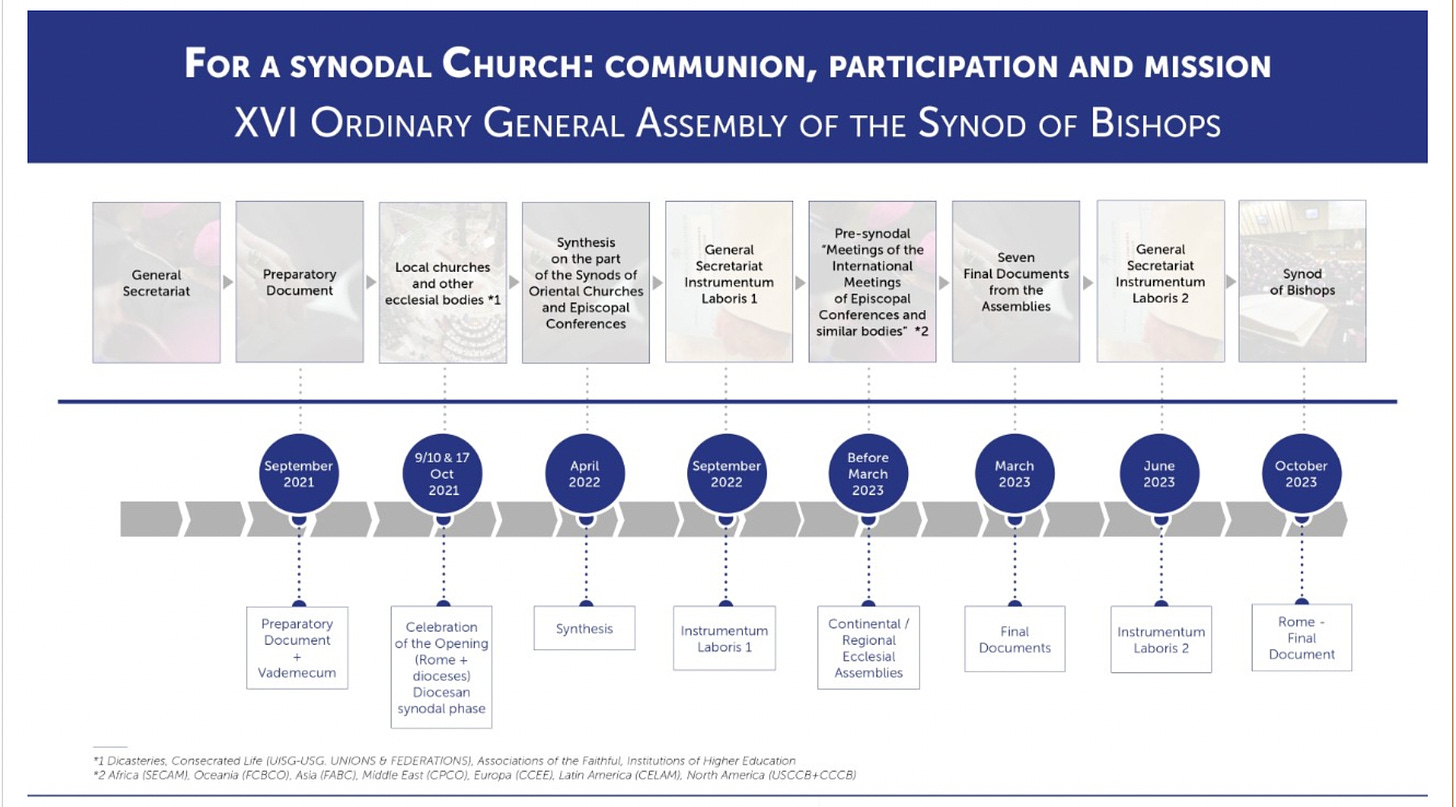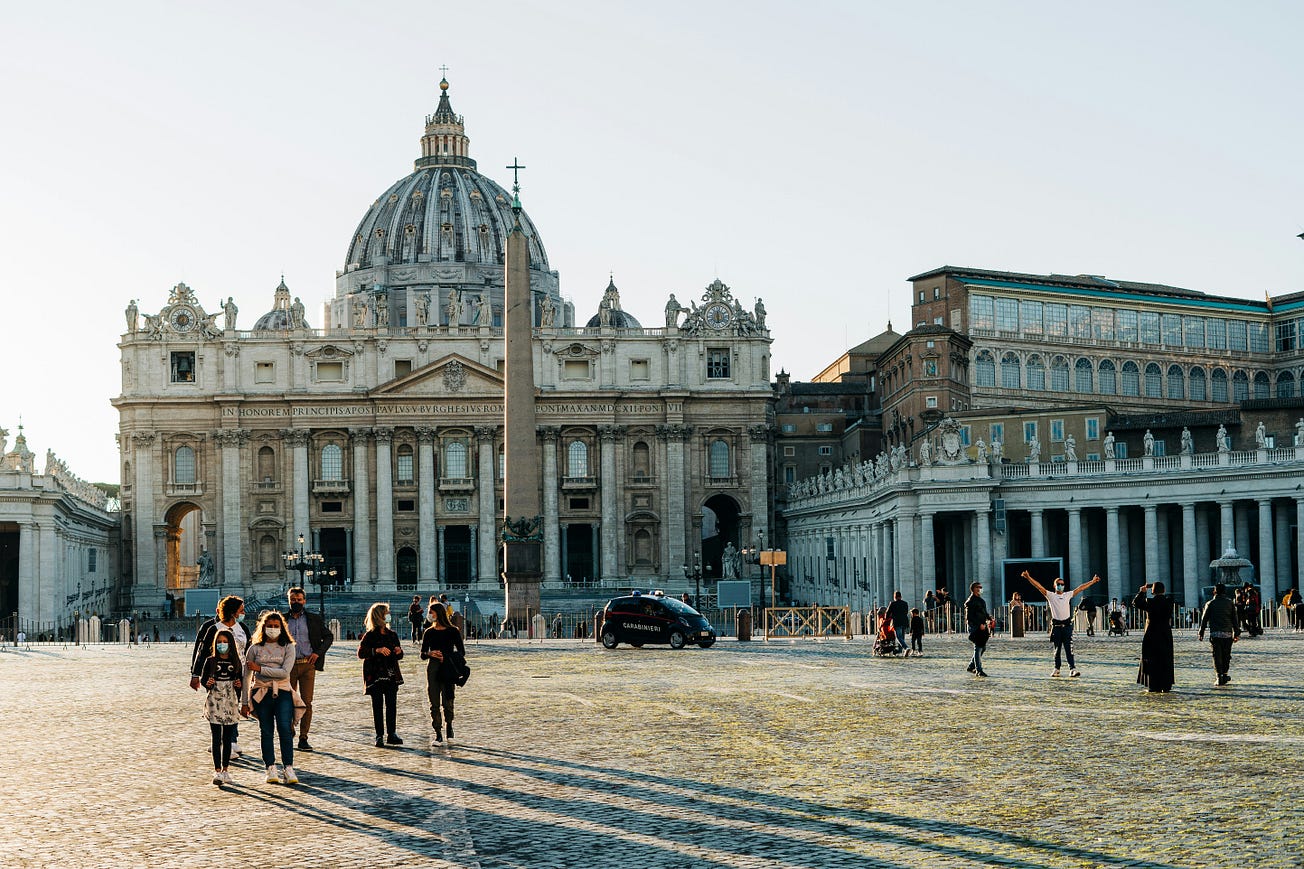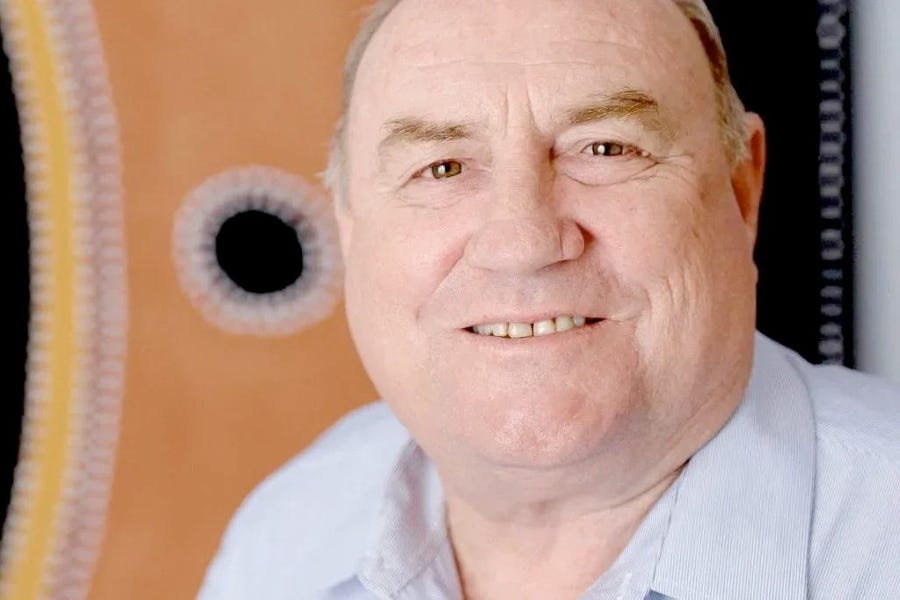The 16th Ordinary General Assembly of the Synod of Bishops - the “Synod on Synodality,” as it’s known - hit a big “due date” Aug. 15.
On that day, episcopal conferences around the world were expected to submit to the Vatican their summaries of what’s happened so far — syntheses of the diocesan reports which captured the first phase of the Church’s two-year synodal process.
It is not clear when the U.S. bishops’ conference will submit its summary to the Holy See, or if the report will be made public at the same time.
But here’s a look at what’s happened so far, and what the next stages will include.
Remind me - what’s the synod on synodality again?
The Holy See announced in May 2021 that Pope Francis wanted the Church to engage in a series of consultations and conversations, beginning at the local level, and aimed at “mutual listening to the Holy Spirit at every level of the Church's life.”
The process would begin in parishes, and then involve diocesan “listening sessions,” focused on the way the Church discerns the presence and call of the Holy Spirit in the life of the Church, and how the Church can develop a more “synodal” approach to that discernment.
From those diocesan sessions, the synod will shift to “continental” discussion groups, followed by an October 2023 month-long meeting of bishops in Rome, after which the pope will likely promulgate a set of reflections on the process, called an apostolic exhortation.
So what’s happening now with all this?
At this point, a lot of paperwork:
The first stage of the synod process, the diocesan consultation phase, was supposed to begin in October 2021 and end in March.
Parishes and dioceses were supposed to conduct listening sessions about Vatican-supplied questions. After those sessions, each diocese was assigned to submit a report to its national bishops’ conference — from there, a team at each conference would be responsible for compiling a generalized synthesis of those reports.
Episcopal conferences were initially supposed to submit their general synthesis reports to the Vatican by April 2022.
But shortly after the process began, the Holy See announced a four-month extension on the homework - episcopal conferences would need to submit their syntheses to the Vatican by Aug. 15, 2022.
The extension meant that dioceses would have until late June to hand in their reports to bishops’ conferences, where they would be read and summarized along with all the others.
In the U.S., the compilation means reading reports from more than 150 dioceses, along with independent reports submitted by universities and other Catholic groups, summarizing participation statistics, extrapolating key themes and ideas, and putting all of that together into a report. It’s a lengthy process, at least as outlined by the Vatican.
But while Aug. 15 is the Vatican “due date” for the report, it is not clear when the U.S. bishops’ conference will actually send its report to Rome.
The USCCB told dioceses that their own reports should be submitted to the bishops’ conference no later than June 30. But some dioceses, among them the Archdiocese of Newark, have indicated recently that officials are still working on those reports, and other dioceses have only recently published their reports.
A delay on diocesan reports will likely lead to a delay in the completion and publication of the USCCB’s synthesis document.
Other episcopal conferences have already released their “national synthesis” documents.
The U.S. bishops’ conference has not yet responded to questions from The Pillar about its progress on the synthesis report.
What’s next?
A few more meetings, and a lot more paperwork - but the schedule for that stuff is a little bit unclear.
Here’s the rundown:
After the Vatican’s synod office receives reports from episcopal conferences around the world, it plans to release an “Instrumentum Laboris,” or working document, for the 2023 meeting of bishops in Rome, according to the Vatican’s official timeline.
That release was initially scheduled for September 2022, but it’s not clear whether the timeline has been pushed back in light of the extension given to dioceses and bishops’ conferences.
The working document will ostensibly contain the main themes in the reports from around the world, along with questions those reports raise for further discussion.
When that document is released, bishops’ conferences are expected to conduct “continental sessions” of the synod meeting, during which bishops - and presumably lay, religious, and clerical representatives - will meet on each continent (save Antarctica, which is exempted) to discuss the Instrumentum Laboris.
The continental phase was initially scheduled to take place from September 2022 until March 2023, when continental assemblies would “conclude with the drafting of a final document to be sent to the General Secretariat for the Synod of Bishops” in Rome.

To date, neither the Canadian nor the Mexican bishops’ conferences appear to have released their national synthesis documents, and no dates have been announced for the “continental phase assembly” in North America.
After the continental phase, the Holy See is expected to take feedback from its meetings, and send a second Instrumentum Laboris to the participants of the General Assembly of theSynod of Bishops, according to the Vatican timeline.
After that release, bishops and other delegates will meet in Rome in October 2023 for the synod’s final meeting.
How is the synod going?
That depends on who you ask.
There have been some bumps along the road.
And Pope Francis initially said that he hoped for high participation rates, urging that dioceses “pass beyond the 3 or 4 percent that are closest to us, to broaden our range and to listen to others.”
“Don’t limit yourself to those who come to church or think as you do – they may be no more than 3, 4, or 5 percent,” the pope said last year. “Let everyone come in… Go out and meet them, let them question you, let their questions become your questions. Journey together: the Spirit will lead you; trust in the Spirit.”
But initial participation numbers, both in the U.S. and abroad, suggest that the participation rate of baptized Catholics in the first phase of the synod rarely has exceeded 2%, and even among Mass-going Catholics, participation in most places has not exceeded 10%.
In its report, the Diocese of Pittsburgh suggested that many of its listening sessions did not reach a broad cross-section of participants.
“Demographically, the majority of parish sessions saw greatest participation from Caucasian adults, with more women than men in attendance, and an average age of 60 and over,” the Pittsburgh report explained.
At a May meeting of “50 diverse individuals from across the diocese,” participants:
“were encouraging of the synodal process as a whole. They pointed out, however, that most of the people the Church needs to reach did not participate in the process and it should be kept in mind that the majority of perspectives which were heard came from a similar group of people, that is, individuals who were over 60 years old and who frequently attend Church,” the Pittsburgh diocese reported.
Defenders of the process say that even with low participation rates, the synod process probably represents the largest consultation of Catholics in history, and that more consultation will be coming.
Reporting that only 2% of Catholics in the Chicago archdiocese had participated in the synod, a Chicago diocesan official explained that “we had hoped for wider participation, but this number represents a beginning.”
But critics have echoed the voices of Pittsburgh’s consultative group, who “raised questions regarding what happens next and whether there will be effective responses to the discussions held or whether, after hearing these things, the Church will continue on without change.”
Some supporters of the synod say the process will benefit from the views of those who showed up, while skeptics have argued that it was difficult in some places to know how to participate, and that the voices of disaffected Catholics, among others, are largely absent.
In the U.S., popular blogger and Catholic apologist Jimmy Akin recently shared an online survey, which he said was an initiative of the Vatican’s Dicastery for Communications, which is “interested in hearing from a wide range of people who may or may not be active Catholics.”
As the synod continues, it is not clear whether Pope Francis or the synod office in Rome will address the relatively limited number of participants, or whether it could lead to additional mechanisms of consultation along the way.




